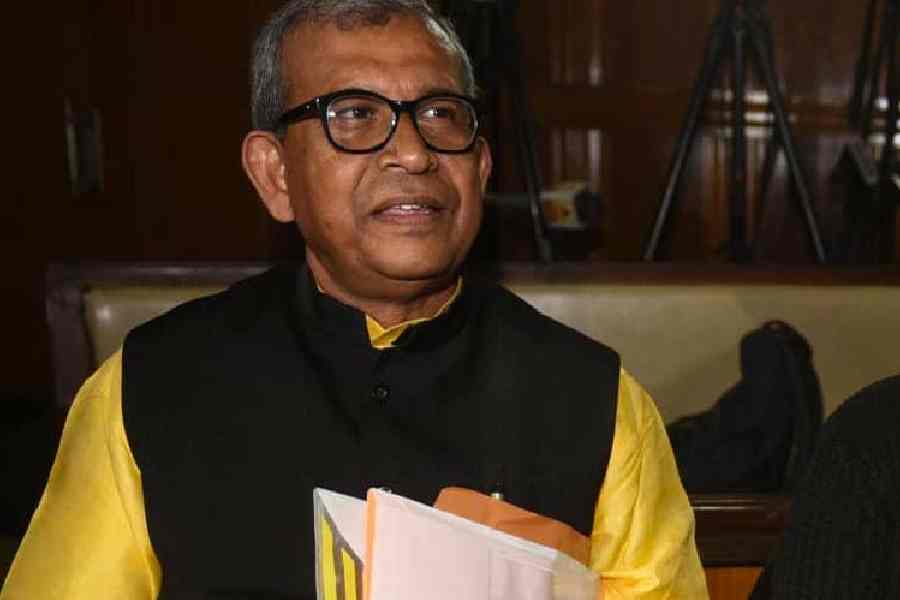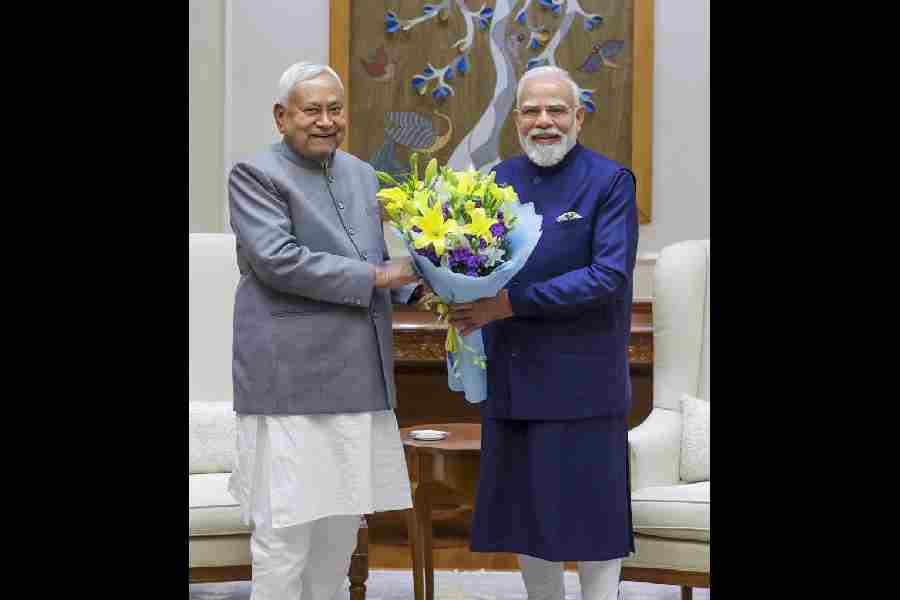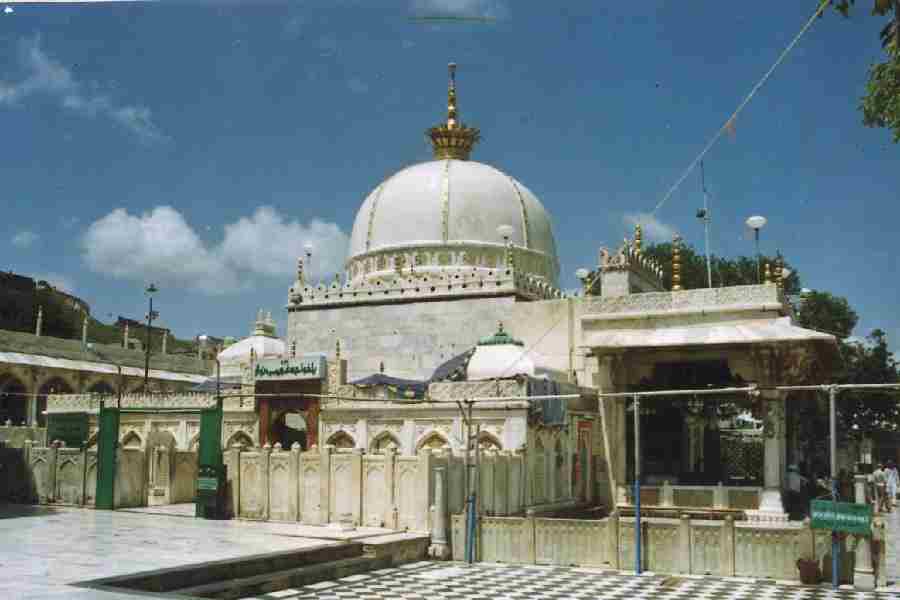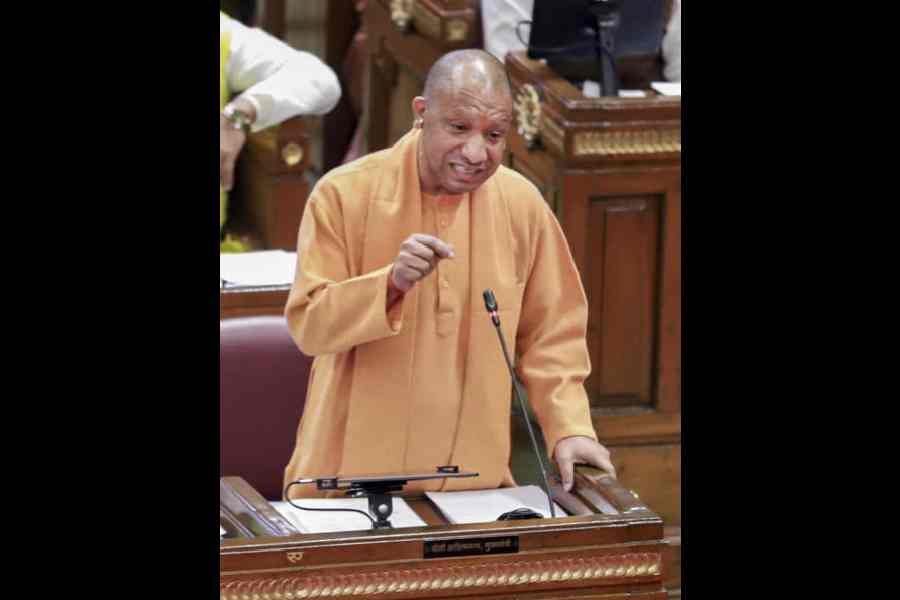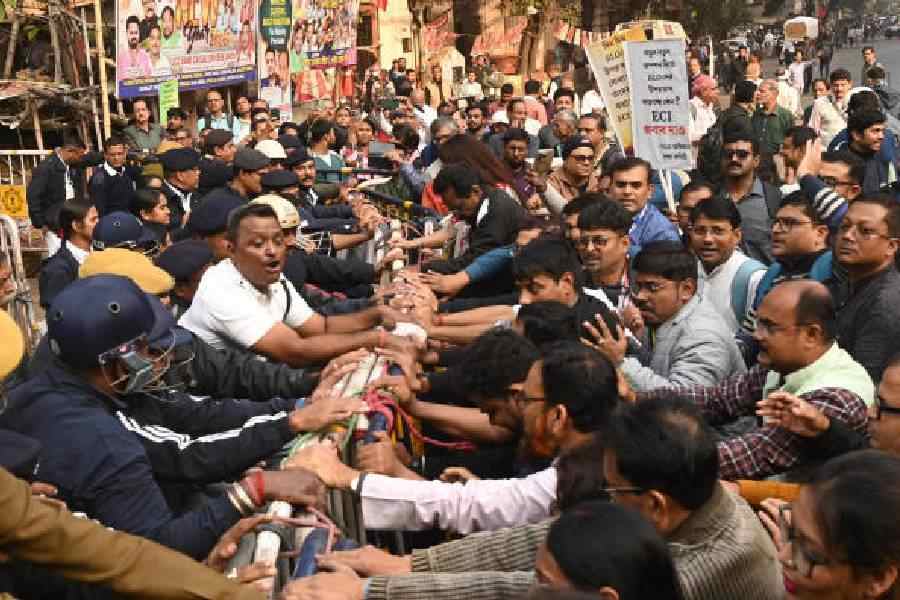|
|
| Role reversal |
Ahmedabad is a city I know well. I must have made at least 20 trips there in the last 30 years. Going back last month, I found signs marking the distance to a certain ‘Mahatma Mandir’. Coloured blue, and with an arrow pointed upwards, these signs were placed at regular intervals on the main roads of the city. The distances were curiously uneven, or perhaps one should say very precise: ‘Mahatma Mandir, 41.7 km!’, ‘Mahatma Mandir, 40.6 km!’, and so on, never rounded off to the nearest whole number.
I was puzzled, and confused. What was this landmark that I had not heard of and which was apparently so important that it had to be advertised every so often on city roads? My Amdavadi friends supplied the answer. This new temple was actually a convention centre being built in the state capital. The first major building had been completed in time for the ‘Vibrant Gujarat’ summit held in early January; the rest of the complex was under construction.
An early endorsement of the project appeared on the blog of L.K. Advani. “Estimated to cost Rs 135 crores”, writes Advani, “the Mahatma Mandir would be spread over 34 acres. The Mandir is to be developed as a monument to the life and philosophy of the Mahatma, apart from providing a first class Convention Centre.” To “remind visitors of Gandhiji’s Dandi March,” continues Advani, “a dome shaped like a salt mound is to provide a museum and meditation centre.”
On the same blog, Advani writes admiringly of the “imaginative approach” of the Gujarat chief minister, Narendra Modi, of his “innovativeness, and his charismatic appeal and hard work”. These comments underline what must be one of the most curious, not to say magical, transitions in Indian politics, whereby, in the course of a single decade, Advani has gone from being a patron of the Gujarat chief minister to being one of his clients and supplicants. Once, Advani was the most visible and powerful face of the Hindutva project. As deputy prime minister of India and as president of the Bharatiya Janata Party, Advani expected, and received, deference from his party colleagues. Now, all that lies between him and obscurity is Modi’s gift of a safe parliamentary seat in Gujarat.
In this time, Modi has made a sort of reverse journey, from being a media-shy if hard-working Rashtriya Swayamsevak Sangh pracharak to the most self-confident and publicity-seeking of modern politicians. Viewing his position today, I am reminded of the one occasion, some 12 years ago, when I found myself in the same room as him. It was in a television studio in New Delhi, which was hosting a debate between Madhavrao Scindia of the Congress, Pramod Mahajan of the BJP, and myself (representing no party at all). Mahajan’s assistant on the day was Modi, then a quiet, behind-the-scenes, general-secretary of the BJP, content to mix tea and serve it to the mighty minister whom he had been commanded to accompany.
Now, of course, Modi is arrogance personified. Consider an interview in a recent issue of the journal, Governance Now, where he puts himself in the same league as a man generally recognized as the greatest political icon of modern times. Asked a question about Gujarat’s development model, Modi offered an analogy with the freedom struggle. From the late 19th century, many brave patriots tried, but failed, to get the British to leave the country. “But all that martyrdom came to fruition”, said Modi, “only when a Mahatma Gandhi arrived on the scene. In fact, Gandhiji made a paradigm shift in the struggle for freedom by converting it into a mass movement.” Likewise, Modi continues, “in the post-independence phase, efforts for development became solely the domain of the government. I have also effected a paradigm shift in the development strategy and converted it into a mass movement”.
Narendra Modi may wish to compare himself to Mahatma Gandhi, but to this historian, he is more akin to another Gandhi, namely, Indira. In the early 1970s, following her colossal victories in the polls and on the battle-field, Mrs Gandhi came to see herself as embodying the collective spirit of a nation on the march. She had won more seats in Parliament than her father, Jawaharlal Nehru; and had redeemed his failure against the Chinese with her own military success against Pakistan. On the economic front, her socialism was fresh and evocative, the slogan of “garibi hatao” by far more compelling than the stale shibboleths of the State occupying the “commanding heights of the economy”.
Between 1971 and 1977, Indira thought she was India, and vice versa. Modi merely thinks he is Gujarat. The territory of 2002 was forbidden to Governance Now (as it is to all interviewers of the man), but the journal did still ask one sharp question, about the fact “that there is contrived or manufactured social consensus in Gujarat, that… you are manufacturing this consensus.” This was Modi’s answer: “Have you seen opposition leaders being jailed or silenced in Gujarat? On the other hand, I should be complaining about persecution as the centre has unleashed the CBI and all kinds of agencies on Gujarat and on me in particular. Then what is this manufactured consensus? What is wrong if everybody agrees on development? Do you mean to say that if we have 60/40 or 80/20 consensus/dissent, it is fine, but when you have 100/0, it is wrong?”
Arrogance, yes, but arrogance with paranoia, a peculiar mixture characteristic of autocrats large and small, real and putative. When criticized, Mrs Gandhi used to speak darkly of the “foreign hand”, suggesting that those Indians who found fault with her policies were agents of Western powers, and of the Central Intelligence Agency in particular. Modi thinks his critics to be either motivated or malign; the former acting at the behest of the Centre, the latter acting out the instructions of the Inter-Services Intelligence. These are but variations on the same theme. Neither Mrs Gandhi then, nor Modi now, can allow that their critics may have a honest or valid point or two. By definition, all patriotic Indians had to be behind Mrs Gandhi, all Gujaratis (100 to 0) have to rally around Modi.
The mandir being built 37.9 km from the hotel where I stayed in Ahmedabad is a monument not to Mahatma Gandhi, but to Narendra Modi’s megalomania. The accounts on the web speak of mounds and mounds of concrete strung together under the supervision of a construction firm not otherwise known for taste, beauty, or elegance. To be sure, the building is functional, and facilitative of business deals. (An official state government handout speaks of how the “mandir” will “house an international level convention centre, three big exhibition halls, and small halls having conferencing facility to facilitate one on one buyer-seller meets”.) But let it not be thought that it will, in any way, represent the aesthetic, moral, or democratic spirit of the Mahatma it claims to honour. Thus, a non-resident Gujarati who visited the site blogged later that “there’s too much police everywhere. So the place would look like a business summit for few hours, but for rest of the time, the venue typically looks like the police summit.”
Here is a tip to first-time visitors to Ahmedabad. If you go in search of the Mahatma, disregard the blue signs, and ask an autorickshaw to take you to the Sabarmati Ashram instead. The experience shall be nourishing, perhaps even transformative. For one thing, unlike that “mandir”, this ashram is on the human scale, with low, modest buildings and green trees around them. For another, there are no policemen either inside or outside the place. For a third, Gandhi actually lived there.



